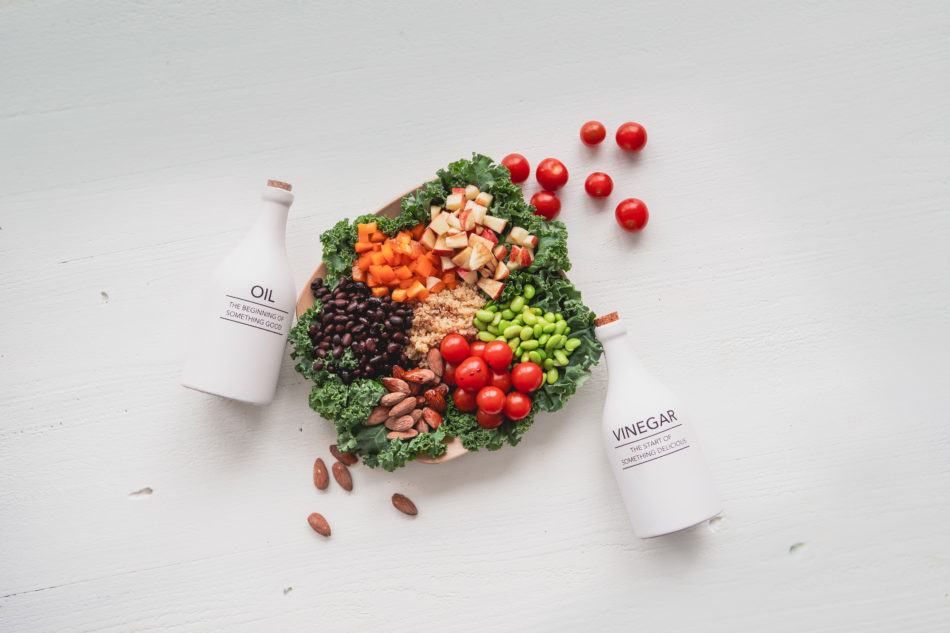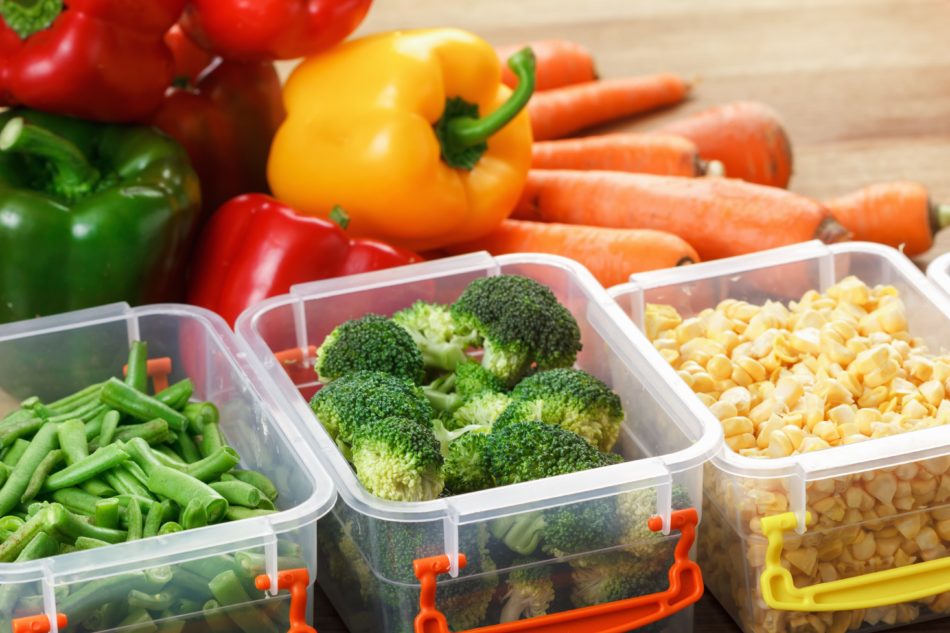Why Eco-Friendly Eating is Important
Now more than ever there is a need for more eco-friendly eating habits. Not only are people eating portion sizes that are too large and indulging in unhealthy foods that aren’t nourishing their bodies, they are also wasting much of their food by throwing it away. These food decisions are having negative impacts on our communities and on the planet – so what can we do to change this?
The food choices we make can have negative consequences, but we can all do our part to limit the effects our eating habits can have on ourselves, the environment, and the communities in which we live by adopting eco-friendly eating habits.
What is Eco-Friendly Eating?
Eco-friendly eating means adopting eating habits that have a more positive impact on the environment and our community.
To practice eco-friendly eating, we constantly need to ask ourselves what, when, how, and why we’re eating certain foods. If we ask ourselves these questions, we can develop a better understanding of the impact our food choices have on our communities and the environment. After all, every food decision we make has an impact!
From the types of food that we enjoy, to how we cook and store food, to the eating practices we embrace, there are many ways we can all make more intentional, eco-friendly food choices. Keep reading to find some of our best tips and resources to help you adopt eco-friendly eating habits today.
5 Tips to Adopt Eco-Friendly Eating Habits
1. Eat More Plant-based Foods

Adding more plant-based foods to your diet helps to reduce your ecological ‘foodprint’ while ensuring your body gets the food it needs to function. Eating more fruits, vegetables, legumes, nuts, and whole grains is a great way to sustainably consume the essential vitamins, nutrients, and protein needed for a healthy and balanced diet. These foods are also often efficient to produce because they require significantly less water during production than many animal-based foods.
Here are some of our best resources to help you and your family eat more plant-based foods:
Dietitian-Approved Tips for Vegetarian Cooking
How To Build A Heart-Healthy Meal
You can also check out some of our favorite plant-based recipes:
Roasted Pepper & Butternut Squash Soup
2. Practice Mindful Eating

Mindful eating means being fully aware of your eating habits, making time to eat healthy foods, focusing on your food while you eat it, and understanding the difference between hunger and appetite.
Practicing mindful eating is a great way to make thoughtful, eco-friendly eating choices.
- When we take stock of our eating habits, we gain a greater understanding for the good foods we’re eating, the not-as-good foods we’re eating, how often we’re eating, and why we’re eating. For example, you may notice that you eat a lot of high-fat foods like chips when you’re feeling stressed, or that you’re eating animal-based proteins at every single meal. When you take the time to analyze your eating habits, you can more easily identify what habits can be changed (or potentially scrapped altogether).
- Making the time to eat healthy, nutrient-dense foods will ensure your body has access to all the essential vitamins and nutrients it needs to function. It’s incredibly important to be intentional and make the most of the time you set aside to prepare and eat a meal by ensuring that meal is loaded with healthy food that nourishes your body!
- Focusing on your food during mealtimes allows you to keep track of how much you’re eating, which will in turn help you avoid under-eating or over-eating. Paying attention to portion sizes is a crucial part of this practice. Since most people are inclined to finish all the food on their plate, try starting off your meal with a smaller portion size. If your hunger cues tell you to keep eating, go for seconds! But if the smaller portion size was enough, you have just limited your food waste (and can store your leftovers for another mealtime).
- Hunger versus appetite is an important distinction to understand. Hunger is when your body sends signals that you need to eat food. Appetite is a want for food that can be triggered by our senses and our surroundings. If we understand the difference between hunger and appetite, we can make better decisions about what we eat and when we eat it.
To delve deeper into the concept of mindful eating, check out our blog that discusses mindfulness and mindful eating habits.
3. Cook Once, Eat Twice
Have you ever thought about cooking extra food to enjoy as leftovers? Cooking larger batches of foods like soups, chilis, or sauces not only saves you time and effort when you need to pull out a quick meal from the freezer, but it also saves on energy usage as you’re only powering your cooking appliances one time. Preparing more substantial batches of food at once may seem like a large task, but it is important to remember the environmental benefits of this practice!
Here are some of our favorite meals to cook once and eat twice:
Sweet & Savory Pepper Pancakes
4. Use Labels

Whether you are tracking leftovers in your fridge or keeping your freezer organized, using labels is a great way to limit food waste in your kitchen and practice more eco-friendly eating habits.
When putting leftovers in your fridge, label your containers with an ‘Eat By’ date, and place them at the front of your fridge so they stay top of mind.
In your freezer, it is a good idea to label your frozen items with the date you placed them in the freezer. This will help make sure you eat your frozen food items before they start to go bad in your freezer. Do some research on how long certain food items last in the freezer as every food is different!
Reducing food waste by labeling food in your fridge and freezer is a smart and easy way to practice more thoughtful, eco-friendly eating. For more ideas to reduce your food waste footprint, check out these 15 simple tips for tackling food waste at home.
5. Properly Store Food
Have you ever thrown out half the food you’ve purchased because it went bad before you had a chance to eat it? This is likely because you did not store the food properly in the first place! Proper food storage not only keeps food fresher longer, but also helps you waste less food.
Did you know that Tomatoes should be stored on the counter, or that Peppers last longest in your fridge’s crisper? Read our Veggie Storage Guide for all the information you need to properly store Tomatoes, Peppers, and Cucumbers in your kitchen.
Here are some extra tips for how to store other types of produce:
- Greens & Fresh Herbs – Store in a sealed bag as this will reduce oxygen flow and help maintain the nutritional value.
- Citrus Fruits – Store in a mesh bag as oxygen circulation will help citrus last longer.
- Fresh Berries – Keep dry and don’t wash until you eat them.
- Asparagus – Keep upright in a glass of water to keep the asparagus bunch fresh and hydrated longer.
- Mushrooms – Store together in a paper bag as the paper will absorb extra moisture and allow the mushrooms to breathe.
- Carrots – Cut off the leafy green stalks so the nutrients found in the carrots are preserved.
- Celery – Wrap in tin foil so natural ripening agents can be released and keep the stalks fresher longer.
All these tips are useful, but if your fridge isn’t well-organized, they may be difficult to put into action. Check out our fridge organization guide designed to keep your produce as fresh as possible.
Commit to Eco-Friendly Eating Today
It’s clear that it only takes small changes to our eating habits for us to have a big impact. Eco-friendly eating requires us to ask ourselves important questions about what we eat and how we eat it: once you ask those questions and gain a better understanding of your current habits, it then becomes much easier to make more informed eating decisions moving forward!
Looking for more resources to help you and your family make better eating decisions? Check out some of our related blogs:
Tips for Overcoming the Barriers to Eating Vegetables & Fruit
Building Healthy Eating Habits in Kids (With Help from the New Canada’s Food Guide)



